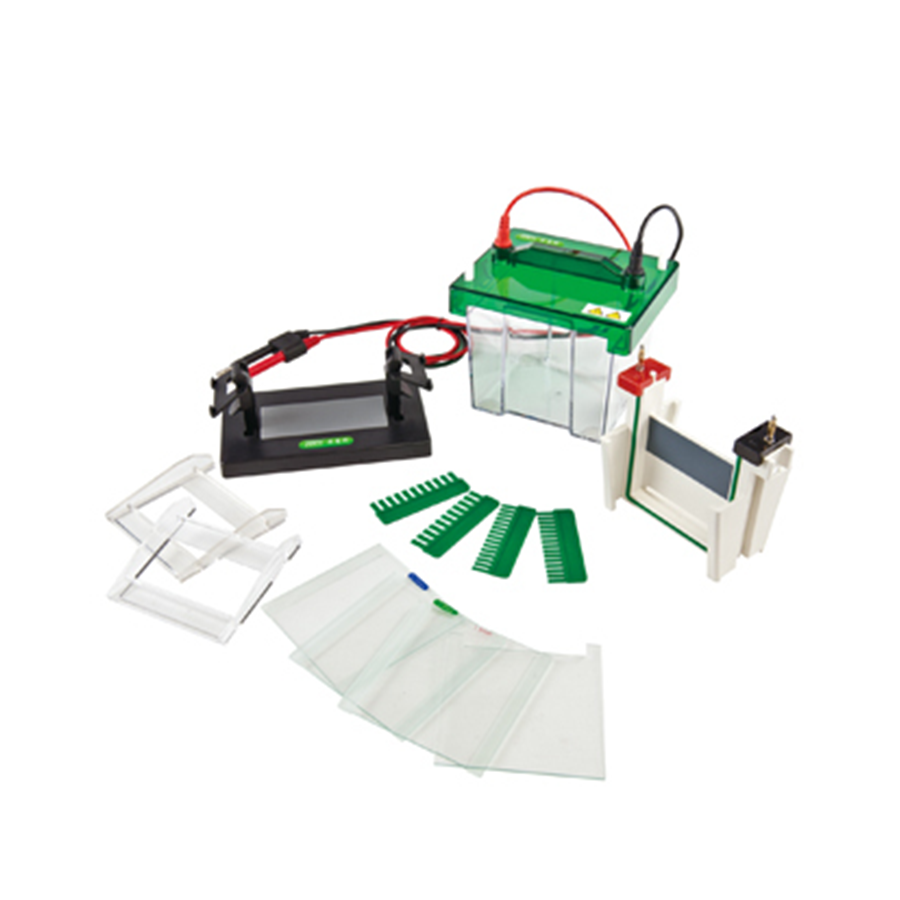To achieve optimal results in any laboratory research process, it is essential to master frequently used techniques, such as electrophoresis. This separation technique is based on the relative mobility of suspended particles in a liquid medium under the influence of an electric field. Primarily used in life sciences research, electrophoresis helps scientists separate biological macromolecules such as DNA, RNA, and proteins.
Electrophoresis is a relatively straightforward procedure that can, however, be difficult to master. Unlike other scientific techniques, small changes in the sample or experimental conditions can significantly impact the results. Moreover, cutting-edge medical technology has ignited research, and electrophoresis is now yielding more precise and efficient outcomes.
We understand that you need equipment that delivers maximum value to your laboratory. We invite you to visit https://kalstein.de/category-product/laboratory-line/electrophoresis/, to immerse yourself in our universe of cutting-edge technology equipment. Our prices are competitive and accessible, we combine the convenience of online shopping with the guarantee of an exceptional product. Because you deserve the best, we create and offer top-tier laboratory equipment. Make your choice today, where science comes to life. https://kalstein.de/
Sample Preparation
One of the most crucial stages in electrophoresis is adequately preparing the sample for the procedure. Samples must be prepared in a way that allows for a clean and clear separation of the particles of interest. This may involve purifying the sample, removing contaminants, and concentrating the particles to be analyzed.
To achieve efficient separation of the particles, it is important that samples are diluted correctly. Carefully measuring the amount of sample and diluting it in the appropriate buffer ensures that the particles do not exceed the gel’s capacity, preventing contamination or distortion of the results. These meticulous steps reflect recent advances in laboratory research aimed at improving precision in scientific procedures.
Choosing the Appropriate Gel
Choosing the right gel is essential for obtaining precise particle separation. The most common gels are agarose and polyacrylamide. Agarose gels are better for separating larger molecules, such as DNA and RNA fragments, while polyacrylamide gels are ideal for separating smaller molecules like proteins.
Selecting an appropriate gel type for the sample being analyzed enhances the efficiency of separation and improves resolution. This choice is based not only on the size of the particles to be separated but also on their chemical nature. These criteria reflect the latest trends in medical technology, including efforts to customize processes for improved efficiency.
Performing Electrophoresis
Once the samples have been prepared and the gel selected, it is time to perform the electrophoresis procedure itself. This involves loading the samples into the gel, applying the electric field, and allowing the particles to separate according to their size and charge. It is important to carry out this process with utmost care to avoid contamination or damage to the sample.
During electrophoresis, it is crucial to regularly monitor the progress of the experiment. A very fast progression may indicate a very high electric field intensity, which could lead to poor separation or damage to the gel and the sample. Through careful monitoring, the intensity of the electric field can be adjusted to achieve optimal separation.
Visualization and Analysis of Results
Once the electrophoresis process is complete, the results must be visualized and analyzed. This typically involves staining the gel to highlight the bands of separated particles and then examining it under ultraviolet light. Proper interpretation of these results is vital for drawing accurate conclusions.
Various computational and digital tools can assist in better analyzing the results of electrophoresis, allowing for precise measurement of dimensions, analysis of band density, and even identification of individual particles. These cutting-edge solutions exemplify the latest trends in medical technology that are revolutionizing the field of laboratory research.
Conclusions and Final Tips
To achieve the best results in electrophoresis, it is necessary to master all steps of the process, from sample preparation to results analysis. Meticulous care, attention to detail, and a clear understanding of the basic principles are essential for any researcher.
It is always advisable to follow good laboratory practices and stay updated on recent advances in laboratory research and the latest trends in medical technology. These two areas together can offer interesting and useful opportunities to enhance the effectiveness of electrophoresis and ultimately achieve more precise and detailed results.

